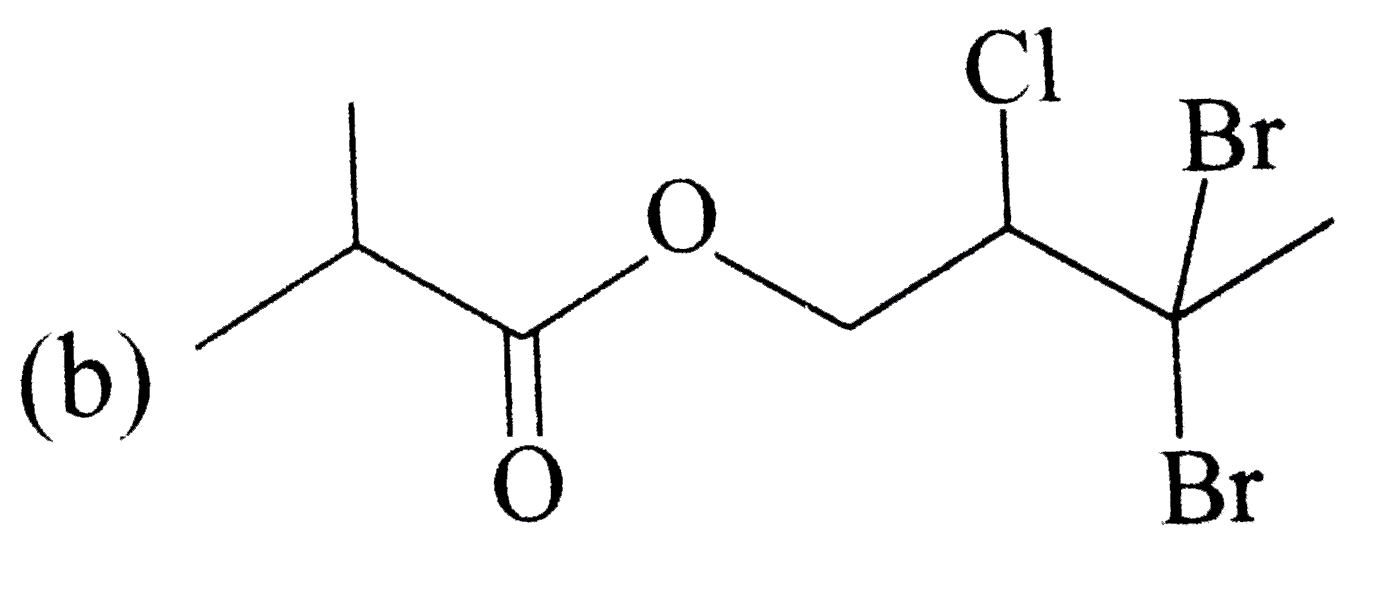1,2-dibromo-3-hchlorobutane
CH2Br−CHBr−CHCl−CH3
Topper's Solved these Questions
- NOMENCLATUREBook:HIMANSHU PANDEYChapter:NOMENCLATUREExercise:Section Ii (Q.76 To Q.100)
Explore 25 Videos
- NOMENCLATUREBook:HIMANSHU PANDEYChapter:NOMENCLATUREExercise:Section Ii (Q.101 To Q.116)
Explore 16 Videos
- NOMENCLATUREBook:HIMANSHU PANDEYChapter:NOMENCLATUREExercise:Section Ii (Q.26 To Q.50)
Explore 25 Videos
- ISOMERISMBook:HIMANSHU PANDEYChapter:ISOMERISMExercise:Subjective Type Problems
Explore 11 Videos
- POLYMERSBook:HIMANSHU PANDEYChapter:POLYMERSExercise:Integer Answer Type Problems
Explore 8 Videos
Similar Questions
Knowledge Check
Which of the following is correct structure of 3,3−dibromo−2−chlorobutyl 2−methyl propanoate ?
A B
B C
C D
D
The R/S designation for the following stereoisomers of 1,3-Dibromo-2-methylbutane is :
 A2R, 3RB2R, 3SC2S, 3RD2S, 3S
A2R, 3RB2R, 3SC2S, 3RD2S, 3SThis section contains Assertion (A) and Reason type questions each question has choices (1)(2)(3)(4) out of which only one is correct
Assertion:Cyclohexane is converted to benzene by removal of 3 moles of hydrogen
Reason:1 bromo cyclobutane combines with Na/ether to yield 1,1dibromo cyclobutaneABoth A and R are correct ,R is the correct explanation of ABBoth A and R are correct,R is not the correct explanation of ACA is correct ,R is incorrectDR is correct,A is incorrect
Sample of 2,3-dibromo-3-methylpentane is heated with zinc dust. The resulting products is isolated and heated with HI in the presence of phosphorus. Indicate which is the structure that represents the final product in the reaction:
View SolutionSample of 2,3-dibromo-3-methylpentane is heated with zinc dust. The resulting products is isolated and heated with HI in the presence of phosphorus. Indicate which is the structure that represents the final product in the reaction:
View Solution1,2-dibromo cyclohexane on dehydrogenation gives :
View Solution1,2-dibromo cyclohexane on dehydrogenation gives :
View SolutionAn organic compound with formula C4H6(X) gives precipitate of X and reacts with 1 mole of Br2 to form 1, 4-dibromo-2-butene. X and Y are
View Solution

